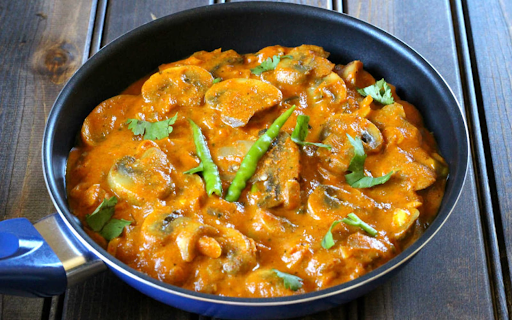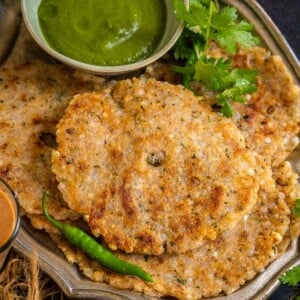What is Dal Tadka:
Dal Tadka is a quintessential Indian dish loved across the country. It is a simple, hearty, and aromatic dish made with lentils (dal) that are cooked to perfection and then tempered with a blend of aromatic spices, creating an explosion of flavors. Dal Tadka can be paired with steamed rice, jeera rice, or roti, making it a versatile and satisfying meal. The beauty of Dal Tadka lies in its simplicity; with minimal ingredients and preparation, it delivers an incredibly flavorful dish that can be enjoyed by people of all ages.
Ingredients for Dal tadka
- 1 cup Toor Dal (Arhar Dal) – Yellow pigeon peas are the most commonly used dal in Dal Tadka. They cook easily and have a mild flavor that blends well with the spices.
- 1/2 teaspoon Turmeric powder – This is used for color and to add a warm earthy flavor to the dal.
- 1 teaspoon Salt – Adjust according to your taste preferences.
- 1-2 Green chilies (slit) – These add a bit of heat and a fresh flavor to the dal.
- 2 cups Water – For cooking the dal. You can adjust the water based on how thick or thin you prefer your dal.
For the Tadka (Tempering):
- 2 tablespoons Ghee (clarified butter) or oil – Ghee is traditionally used in Dal Tadka, giving it a rich and aromatic flavor, but you can use oil as an alternative.
- 1 teaspoon Cumin seeds – Adds a nutty and earthy flavor to the tempering.
- 1/2 teaspoon Mustard seeds (optional) – Mustard seeds give an added pungency and are common in some regional variations of Dal Tadka.
- 1/4 teaspoon Hing (asafoetida) (optional) – This is used to enhance the aroma and reduce any digestive issues that some may experience with lentils.
- 2 dried Red chilies – These are used for a smoky flavor and mild heat.
- 1-2 Green chilies (slit) – Adds extra spice and fresh flavor.
- 1 teaspoon Ginger-garlic paste – This is a fundamental ingredient in Indian cooking, adding depth and complexity to the dish.
- 1/2 teaspoon Red chili powder – For added heat and color.
- 1/2 teaspoon Garam masala (optional) – This is a blend of spices that adds complexity and depth to the dish.
- 1 tablespoon Fresh coriander leaves (chopped) – For garnishing and adding a refreshing flavor.
- 1 teaspoon Lemon juice (optional) – A squeeze of lemon at the end gives a fresh burst of acidity and balances the dish.
Garnish and Serve
Garnish: Garnish the Dal Tadka with freshly chopped coriander leaves. The coriander will add a burst of fresh flavor and color to the dish.
Optional Lemon Juice: For an extra touch of brightness and acidity, squeeze a bit of lemon juice into the dal. This will balance out the richness of the ghee and enhance the overall flavors. Serve: Serve the hot Dal Tadka with steamed rice, jeera rice (cumin-flavored rice), or roti. It also pairs well with naan or paratha for a complete meal.
Dal Tadka is a quintessential Indian dish that combines simplicity with rich flavors. It’s made by cooking toor dal (yellow pigeon peas) with turmeric, salt, and green chilies, creating a soft and comforting base. After the dal is cooked to perfection, it’s tempered with ghee (or oil) and a mixture of aromatic spices such as cumin seeds, mustard seeds, hing (asafoetida), ginger-garlic paste, red chili powder, and garam masala. The tempering is added to the dal, enhancing its flavor and giving it a rich, fragrant profile. The dish is garnished with fresh coriander leaves and often a squeeze of lemon juice for an extra burst of freshness.
Variations of Dal Tadka:
While the traditional recipe is made with toor dal (yellow pigeon peas), you can experiment with different lentils for variations in taste and texture:
- Moong Dal Tadka: A lighter and quicker-to-cook option, moong dal gives a smoother, creamier texture.
- Masoor Dal Tadka: Red lentils cook quickly and have a slightly sweet flavor. Using masoor dal will create a softer, more velvety dal.
- Chana Dal Tadka: This will give the dal a slightly nuttier flavor and a thicker texture.
Health Benefits of Dal Tadka:
Dal Tadka is not just a delicious and comforting dish, but it also offers numerous health benefits, making it a great addition to a balanced diet. The primary ingredient, lentils, is rich in protein, making Dal Tadka an excellent source of plant-based protein, which is essential for muscle repair and growth. This makes it an ideal dish for vegetarians and vegans who may need alternative sources of protein. Additionally, lentils are high in fiber, which promotes healthy digestion, helps in maintaining bowel regularity, and aids in weight management by keeping you full longer.
The fiber content also helps in managing cholesterol levels, supporting heart health. The dish is a good source of iron, which is crucial for maintaining healthy red blood cells and preventing anemia. The use of ghee in the tempering, though high in fat, provides healthy fats that are beneficial for heart health when consumed in moderation. The spices like cumin, ginger, and garlic have anti-inflammatory properties and contribute to digestive health. The addition of coriander and lemon juice enhances the dish with vitamin C, which supports the immune system. Overall, Dal Tadka is a nutrient-packed meal that supports digestion, heart health, and overall well-being.
Dal Tadka is a comforting, flavorful, and nutritious dish that embodies the essence of Indian home cooking. Whether you’re enjoying it on a chilly evening or sharing it with family and friends, it’s a dish that brings warmth and joy to the table. With simple ingredients, easy preparation, and a wide range of variations, Dal Tadka can be customized to suit your taste preferences while retaining its rich, traditional flavors.
for more recipe blog follow Swad Apna




